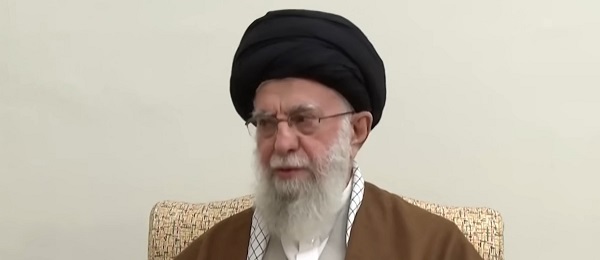COVID-19
Emergency of Under-Treatment – Panel of 8 prominent doctors and scientists say earlier treatment is the only way out of health emergency
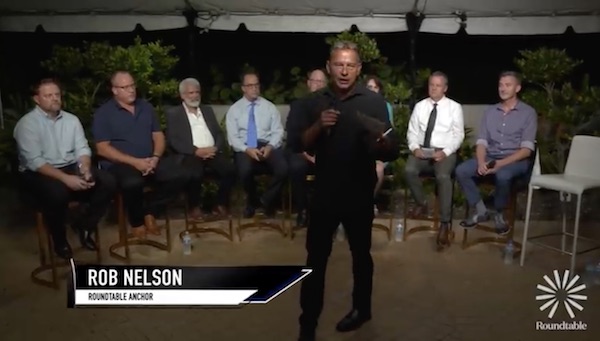
Roundtable Media was launched in June, 2021 by Brock Pierce, James Heckman and David Bailey. The Digital Media and Bitcoin Pioneers are setting out to finance and distribute the work of hundreds of the world’s top journalists, activists and news producers. Click here for more information about the Roundtable Media venture.
This discussion was moderated by Rob Nelson, a former Executive Producer/Anchor with ABC, FOX, UPN, E! and A&E. Click here to see the biography of Rob Nelson, as well as the principle members of Rountable Media.
Unfortunately Youtube keeps taking down the video. We will check periodically and load the actual video when/if it comes up again. You can see it at this link.
In the meantime, the transcript is attached.
Panelists included Dr. Robert Malone, Inventor of mRNA technology, Dr. Ryan Cole, Mayo Clinic-trained, board certified pathologist who has diagnosed 300,000 patients, Dr. Pierre Kory, M.D, M.P.A, a Pulmonary and Critical Care Specialist and President, Frontline COVID-19 Critical Care Alliance, leader in intensive care and author of medical student textbooks used across the world. Kory has influenced the standard of care for COVID and given US Senate testimony.
Also on the panel were Dr. Richard Latell, a Family practice doctor, Dr. Heather Gessling, MD, FABFM, a Hospital Chief of staff that has been working with children and families around COVID since the beginning of the pandemic, Dr. Mark MacDonald, Psychiatrist, Dr. Brian Tyson, who has possibly treated more COVID patients than anyone in the world, seeing over 6,000 of them, Dr. Richard Urso, an Ophthalmologist and inventor of FDA-Approved wound healing drug and an eye surgeon with one of the largest clinics in the country and has spent the last year and a half deep in COVID, Mathew Crawford, a Biomedical statistician with Metaprep Education Group and Moderator Rob Nelson.
Moderator: We are seeing a spread of Delta right now. Officials say we’re all going to get Delta. Should we be scared? Is Delta upon us? Are we in a permanent pandemic right now?
Dr. Richard Urso, MD FAAO: It’s like the same song, second verse. We’re going to keep seeing variants. It’s normal. I don’t expect that to change. We’re vaccinating in a very narrow framework. And so when you vaccinate just the spike, you’re going to get variants because we are doing very specific treatments, what you’re seeing now in the Delta variant is you’re seeing the same thing. Just a small change will allow the virus to mutate and get around that and you’re going to see this happen over and over again.
Moderator: Dr. Malone, We’re seeing all these variants and I think the question people often ask is, why?
Dr. Malone: This is really controversial. There’s a lot of discussion that this is a pandemic of the unvaccinated and the unvaccinated are the ones that are driving these escape mutants. That from a fundamental evolutionary standpoint, as a molecular virologist, doesn’t make sense. This virus now is known to mutate and throw off mutants at a much higher rate than we expected it to be. So there are very many mutants. The virus is evolving very rapidly. This is akin to what happens if you overuse antibiotics. So in sum, what we’re doing with universal vaccination is driving towards this end point of vaccine resistant mutants. We don’t have to.
Moderator: So it sounds like we’re on the defensive. We’re trying to defensively vaccinate our way out of something that we’re already deeply in.
Dr. Cole: Here’s my optimistic view on Delta. Yes. Delta’s new, it’s shaped differently. Technically it has escaped the antibodies from the vaccine. So we give a shot, give another shot and say, we’re going to give a booster with the same shot for a virus that existed five variants ago. It’s like saying to healthcare workers, we’re going to give you a flu shot for the upcoming flu season, but we have leftover flu vaccines from four or five years ago in the freezer. Illogical, no common sense in that whatsoever. So the variant has escaped it. And if you use a vaccine only approach you select for these variants, my optimistic point is Delta is a wildfire. A lot of people are going to get it. If you look at countries that handled it right, the death rates from Delta in most countries were far lower from this variant than other variants. So I want to give that optimistic message. Does it mean people aren’t going to get sick, not be hospitalized, not going to die? No, it doesn’t mean that, but what we do need to look at, is early treatments because if you’ve been vaccinated, I think scientifically we need to be 100% honest with everybody and say, even if you’re vaccinated or you’re not. We can get the virus now, vaccinated or not. And the vaccinated can carry equal or higher viral loads.
Dr. Kory: This path that we’re on, which is this sort of monolithic vaccine only strategy. We’re explaining the science, why that can’t be the only solution. We can not vaccinate ourselves out of this problem. The positive that I want to say is that there we know of strategies. They’re actually largely being ignored and suppressed. And I don’t want to sound conspiratorial about this, but the reason why is because there’s still a firmly held belief that the vaccines will solve this. The evidence that you just articulated is that it’s becoming increasingly clear that that’s not true. And so my hopes are that more and more attention is going to be paid to the other strategies, which have so far been ignored, which is that of early treatment. Especially now that the vaccinated are getting sick. Many of the vaccinated, many people were led to believe that if you get your vaccine, we’re going to end this thing. You don’t have to worry about it. You can carry on with your lives. But guess what, we’re talking about variants. My colleagues are now talking about even scarier variants that are coming. And so we need more tools to fight this. We need more weapons to fight this. And guess what the positive message is. We have them. And I’ll tell you the strategies that we have are independent of the variants. They can handle any variant that comes at us. We just need to get that message out.
Moderator: None of you are against vaccinations in general, meaning the idea of vaccinating, you probably all have vaccinations. Your kids have vaccinations, your family, right? Is that a fair statement?
Dr. Cole: That’s a fair statement. I’ve had all my childhood vaccines as have my children. I’ve had plenty of military vaccines back in the day. I’m not anti-vaccine, never have been, but I am pro good science. And right now there’s science that’s very questionable with something that’s very quick and we’re seeing things that we’ve never seen before. So I’m hesitant in this regard.
Dr. Malone: I think that the vaccines need to be used intelligently. That’s my objection. And as Dr. Cole has mentioned this set of vaccines that we have right now, Moderna, Pfizer and J & J, they’re all gene therapy based vaccines. And they all have a common problem. They only have one antigen: the spike antigen. And when they were developing them, they didn’t realize that spike was biologically active–no fault of theirs. Everybody was in a rush. It was the fog of war and they made decisions on the fly. But now it’s time to take a breath and say, ‘Hey, does this really make sense? And where does it make sense?’ We don’t have to be just left or right. Pro or anti-vaccine, there’s a middle ground. And I’m suggesting, and I think we all are aligned that what we’re talking about is intelligent deployment, strategic and tactical deployment of vaccines. We, as a community, need to protect these people at high risk, not just here in our community, in our states, in my opinion, we need to protect the elders throughout the world. We don’t need to hoard all the vaccine for people that don’t really need it. We need to make it available across the world for all cultures, for those people that are at very high risk.
Moderator: Dr. McDonald, you’ve talked a lot about fear and about how you feel the pandemic has created almost an incurable fear.
Dr. McDonald: I think fear has really been the driving force of this pandemic from the very beginning. I said, as early as may of 2020, that we’re not in a medical pandemic, we’re in a fear of pandemic. I think that it is evolved. However, a bit beyond fear. I think that what’s driving the fear now is propaganda.
Moderator: Your point is it’s really messed kids up. And that struck me the first time I heard you say that, that, that kids, unlike adults, don’t just bounce back. That’s your point kids. And you said, you think an entire generation of kids has been screwed by this, that they will not get their psychological health back, which is really depressing. If that’s true.
Dr. McDonald: I work with children. I see kids all day long. I’m a child psychiatrist. This is happening all the time. Every day in my practice. My concern is that the developmental stage that children need to go through: babies. toddlers, young adults, is being foreclosed on them. Brown university department of pediatrics published a study two weeks ago that found that babies born after January 1st, 2020, which is when this whole pandemic started, have a IQ point drop of 20 points compared to babies born before January 1st, 2020. That’s huge. Why? They don’t see faces. They don’t play, they don’t have exposure to friends. They don’t go to school. They’re basically locked in their homes, looking at their parents for a year and a half. And their brains have not developed. My concern is that we are building a generation of young people who are so traumatized that they will never fully recover from this. And even if we give them therapy and treatment, they’re always going to be damaged. They’re always going to be scarred emotionally. I don’t mean for it to be depressing. I mean, for it to be alarming so that everyone can finally say “stop.” We’ve got to stop the damage and then figure out what to do about it.
Moderator: What does the damage to you guys actually mean?
Dr. Heather Gessling: I’ll speak to that. I think stopping the damage means to acknowledge what we have done wrong. I think that we should reverse all of the measures that have been implemented. I feel like patients, families, and parents should take it upon themselves to feel empowered. We need to get back to the basics because we’ve done this wrong for so long. It’s been so damaging. One of the books that I had in medical school and that we all had in medical school was Harrison’s principles of internal medicine. This is basic medicine. This is what we have forgotten. “Many specific host factors, (That’s us) influence the likelihood of acquiring an infectious disease, age, immunization history, prior illnesses, level of nutrition, pregnancy status, coexisting illnesses, and perhaps emotional state all have some impact on the risk of infection after exposure to a potential pathogen. All we have done is focus on one of those–immunization history. And so the factors level of nutrition, emotional state, as we have discussed can not be underestimated. The ability to provide early effective treatment should make us feel empowered. We should not feel afraid anymore.
Moderator: Are kids more at risk? The numbers don’t seem to suggest that. I mean, the number of deaths of kids from COVID was lower than the number of deaths from the flu. But now people are saying Delta’s more severe. So are kids at risk?
Dr. Urso: I’ll just give a few statistics. There are about 330 children that have died of COVID in a year and a half. There’s typically about 50,000 children per year, who die. Many more have died of drowning and car accidents. So if we look at the relative risks, COVID has killed about 330 children in the last year and a half. So I think you need to look at that as you look forward to the risk to children. Do they spread? No, they don’t spread. There’s at least seven different studies that show that essentially the spread of children to adults is close to zero. So children are not super spreaders and children don’t die from the disease.
Dr. Tyson: I own three urgent cares in the Imperial valley area, which is one of the hotbeds for COVID-19 because Mexicali sits right across from us. That’s two and a half million people. So we see about 200 to 300 patients a day. I don’t do telemedicine. We do straight face-to-face encounters. So one of the things that I wanted to differentiate was,’Are these infections truly COVID?’ because they have the cough, cold and rhinitis and sore throat. Or, are there other viruses going on? So I decided to buy a $100,000 PCR machine, and we’ve been running these PCR tests. And recently I can tell you, we’ve seen 90% of rhinovirus and also RSV in the kids. So RSV typically is a winter illness. It causes pulmonary symptoms. It causes pulmonary bronchiolitis, not bronchitis, but bronchiolitis in the lower, lower airways. And that’s why the kids are having trouble right now. It’s not in my opinion from COVID, but from RSV.
Moderator: Clearly, kids are being hospitalized. I know the CDC recently said it’s actually not a higher proportion, it’s the same proportion, but kids are getting sick.
Dr. Tyson: You’re correct to say, kids are getting sick. And, under that CDC data that Dr. Ursa was talking about, healthy children didn’t die from COVID-19. Okay. It was those children who had four or five risk factors, morbid obesity being number one, diabetes being number two and weakened immune system being number three, kids on chemotherapy and things like that. So, it’s no different than RSV, rhinovirus, influenza, that would normally take out these kids anyway, unfortunately. But yes, we are seeing a higher number of COVID cases in the morbid obese and the severity of illness in the morbid obese in kids is problematic.
Moderator: Do healthy people die of COVID? I mean, is it all comorbidities? Is it obese people? Is it people with, you know, immunocompromised?
Dr. Kory: Greatest predictor for dying from COVID is age. With every decade of life, your risk goes up and it’s a straight line. Then you have to worry about comorbidities, right? So, the diseases that they have make them more prone like obesity and diabetes. However, we are seeing younger people now coming into ICU. We are seeing relatively healthy people die. We’re now seeing people with less comorbidities than before in the first wave last spring, almost everybody was either obese or diabetic. Now we’re seeing much less of that. You know? So when my colleagues said not one healthy kid died of COVID, I would also like to say, I don’t believe that there’s anybody who’s died who’s gotten an effective early treatment.
Dr. Urso: People don’t die of the virus. They die of inflammation and they die of thrombosis. Do we have drugs for inflammation that are not off-label, steroids? There’s a bunch of drugs that are on-label that can be used for the purpose of inflammation in this disease. These are not controversial topics. There are many, many different products we can use: Lovenox, Aspirin, Eliquis, XARELTO® . There’s a bunch of drugs for thrombosis. So when people say they died of COVID, they died of an inflammatory thrombotic disease. They didn’t die from the virus running through their body. Hopefully at some point we’ll have a really good early, early treatment that’s directed to the virus itself. Right now, we have other treatments as Dr. Kory said, they weren’t originally designed for this virus, but they are very effective against this virus.
Dr. Latell: What we’re seeing now is that patients are getting early treatment with medications, such as Ivermectin, Hydroxychloroquine, and a host of other medications because of this free exchange of ideas and this group of physicians and others around the world.
Moderator: One thing I think we’ve all seen, Ivermectin is a great example, where the media has politicized the issue. So depending on your politics, you’re going to see one or two different things. And you’re going to hear, “oh, well, it’s horse medicine. People are taking horse medicine. But Ivermectin is an FDA approved drug for human treatment.
Dr. Kory: It’s how the system is designed, which is largely against the use of repurposed drugs. If you know what a repurposed drug is, it’s generally a drug that’s off patent and not profitable. It’s been approved for use in another disease for which it’s found to be effective. So Ivermectin is well known as an anti-parasite. In fact, the discoverers won the Nobel prize because it eradicated two globally endemic parasitic diseases. I mean, it transformed the health status of good portions of the world. We knew on the ground that corticosteroids were going to work. We knew it because of our experience treating severe lung disease. We started using it. And guess what we started to see? As we started to use steroids, people started to come off ventilators.
People who were needing oxygen were coming off oxygen, getting discharged. The entire landscape changed. And I went into the US Senate, and I testified to the world that it was critical we use corticosteroids in the hospitalized patient. And I did that at a time where every national international healthcare agency was recommending against its use because they thought it would increase mortality. And I got heavily criticized for that. It’s now the standard of care worldwide. Everything else that we’ve discovered, everything that’s in our protocols is because we have used good clinical sense, lots of experience. And we’ve used trial and error using our best judgments of risks and benefits. We don’t want to cause harm, but undertreatment and nontreatment is harm, I think this is a pandemic of undertreatment. Long-haul COVID is only caused by one thing–undertreatment. Hospitalized COVID is only caused by one thing–undertreatment. I’m even going to push the envelope here. Getting COVID is only caused by one thing, which is a lack of an effective preventative strategy. I thought, everyone thought and hoped it was going to be the vaccine. It’s not.
Moderator: You’re saying getting COVID itself is completely preventable?
Dr. Kory: There’s a number of agents that have been shown, if you take them regularly, your chances of getting COVID are far lower. For me the most effective is Ivermectin. There are dozens of trials. We’re now up to 14 trials with thousands of patients. In the trials which you take it the most frequently, you’re nearly perfectly protected from getting COVID. It is a highly effective agent. The reason why Ivermectin is so important in this disease is that it has numerous mechanisms of action. The most important mechanism is that we know it binds tightly to the spike protein. The spike protein on this virus is how it gets into our cell, how it’s allowed to replicate. If you can bind it, you can block it and you can prevent yourself from getting sick. The one caveat though, is what we’ve learned is that in the Delta variant, just like the vaccines, we have started seeing breakthroughs. So we have to change our dosing strategy of all of the trials done on Ivermectin. The strongest evidence is actually in prevention. It is a wickedly effective, highly potent preventative agent. You, if you take it regularly, your chances of getting sick or near nil.
Moderator: Matthew, you’ve done a lot of statistical research, particularly around the success of early treatments and it hasn’t gotten a lot of attention. Why don’t you take a second and talk about your findings?
Mathew Crawford: So early on, I was a little frustrated, not seeing much analysis. And so I started to reach out to doctors that I knew and said,”What do you see? And, numerous doctors told me “I’m using this and it looks good” and there wasn’t much data out. So I kept reaching out to more and more doctors around the world and eventually collected about 20,000 data points. And this is almost a year and a half ago. And it looked like those who were using Hydroxychloroquine, and especially if they included Azithromycin and zinc, or possibly another macrolide other than azithromycin, but with the zinc in particular, it looked to everybody in their communities about a 98% lower mortality rate. And this was across like seven different nations I got this data from, so put all this together and it was tens of thousands of data points by the end of last year. But it’s difficult to get a lot of this data published. I’m working on Dr. Tyson’s data right now, and we’ve had the results for months, but it’s difficult to get it published. Anything that goes against the narrative takes longer in peer review.
Moderator: Is that a valid thing that it would take longer? I mean, is that understandable or is that politics?
Mathew Crawford: “I think there’s some politics involved.”
Moderator: Dr. Tyson you’ve said you have how many deaths out of the 6,000 people you’ve treated.
Dr. Tyson: So with treatment starting from day one to 7, zero.
Moderator: Zero deaths.
Dr. Tyson: Right. With treatment starting from day seven to 14, I have four. Two died the same day they showed up at the clinic and two died in the hospital.
Dr. Gessling: And I want to say, my numbers exactly match up with Brian’s. I’ve treated about 1500 and I have had one death. And it was because there was some delay in treatment. And I know that several physicians who have treated didn’t have any deaths until approximately July, August. And that was with the change in the virus. Within a week or two, all of us were saying the exact same thing–something has changed. What do we need to do to change the protocol?
Moderator: Dr. Gosling, you’re treating vaccinated and unvaccinated,
Dr. Gessling: Absolutely. Vaccinated and unvaccinated. And so I would say in July, the majority of my sicker patients were unvaccinated. And then I noticed in August, it seemed to be about 50-50, and now it’s more vaccinated. And so it happened as a very quick change in my practice.
Dr. Latell: Dr. Tyson, Dr. Gosling and myself are family physicians. Okay. So we are the folks who have been in those front lines, getting the phone calls in the middle of the night from concerned parents. And what you’ve just heard from Dr. Kory is that if you take the right preventive plan of medications, either hydroxychloroquine or ivermectin or both, you’re approaching 0% mortality.
Moderator: I Hear your passion and understand where you guys are out there in the trenches. It’s bizarre that we are facing a pandemic that has left us where we are clearly divided about the simplest thing of treatments. They’re not all going to work. Some are going to fail. You’re going to experiment, but in most diseases, doctors get in there and you figure it out. And in this one, for some reason, we got blocked into this thing where it’s like, no, no, no. And I think you have an opinion, partly why.
Dr. Kory: If we have a solution or we have effective treatments. Why aren’t they being recognized and disseminated across the world? And there’s really two forces that I think we’re up against. The first force is that in general, our health agencies are suffering what’s called regulatory capture. They’re largely driven by financial interests, external financial interests that are really influenced in making sure that the solution to the pandemic is one that is profitable. Vaccines are profitable. The other challenge that we were having, which is somewhat overlapping is that academia, which we call the ivory towers, the big academic institutions in the last 10 years, there’s been this increasing belief into the idea that the only proof of efficacy of a drug has to come out of a large double-blind randomized controlled trial. When you do a randomized control trial, you have to first make the diagnosis. Everyone has to have a positive test. They have to have symptoms. They have to be enrolled consented, randomized, and then the drug is delivered. Each one of those steps takes time. And so by the time they do these randomized control trials, oftentimes it’s very delayed. And oftentimes it’s underdosed because they’re using doses that I was using six months ago. We move with this pandemic because we can’t prove it with the one tool that we need to prove it, we are getting suppressed. And that message is getting suppressed.
Moderator: Who funds big randomized controlled trials?
Dr. Kory: That would be pharma generally. Now there is philanthropy and there is the NIH. But the NIH and pharma are quite tightly linked.
Moderator: Let’s just take a minute and address some of the vaccine related questions that I think people have. And I want to start with you, Dr. Malone, if that’s okay, because you are the one of the architects of mRNA technology. And if I were to ask you Dr. Malone, are you against the vaccine for COVID? I know your answer would be absolutely not, but you do have some issues with this particular vaccine. Why?
Dr. Malone: So thanks for that opportunity to make the point that I’m not an anti-vaxxer. I’m a guy who spent the majority of my adult life developing vaccines and trying to get vaccines licensed. For example, the Ebola vaccine that we call the Merck vaccine. This is a technology platform (m RNA) that I believe and many believe has enormous promise. And right now it’s in its infancy. The safety of the underlying technology is not yet fully demonstrated. It hasn’t been fully characterized and that will come, that’s good news. However, in the fog of war and the need to come up with something, as soon as possible, some decisions were made to move things forward very rapidly. They were based on incomplete information. People did what they did in good faith and focused on a protein that they thought was fully safe–spike protein. But now over a year later, we know that, in the virus, this protein is responsible for much of the disease that the virus causes, the pathology in your vascular endothelial cells, the coagulation. And it’s unfortunate that this particular protein in what appears to be a biologically active form, was used in these vaccines.
Moderator: What is the result of that? What does that mean?
Dr. Cole: This is a thromboembolic disease. COVID is a clotting disease. Now, when we give a spike protein to Dr. Malone’s point, that is an active biologic molecule. We chose the wrong molecule that causes disease. So what do I see under the microscope? You see these COVID skin cases, you know, these weird COVID rashes. What is that? That’s clotting in the skin.
We unfortunately have doctors that say there’s no damage from the vaccines and no deaths from the vaccines. We should use the French legal system. When we have a new product that’s never been used on humanity in the market. It’s guilty until proven innocent.
Every time there is damage or disease from that product, we need to assume that it is guilty until we prove it isn’t. So under the microscope, we see clotting in the lungs. We see clotting and the vessels. We see clotting in the brain, not from the virus, but from the spike, from the vaccine itself. Now consider the numerator and the denominator are most people going to be fine? Yes. And I want to emphasize that in our data, around the world, from the United States, from the UK, from the Euro vigilance in Europe, we have seen more death and damage from this one medical product than all other vaccines combined in the last several decades. In just a short eight month window of time, it has done more damage than any other medical product therapy, shot, um, modality of anything we’ve ever allowed to stay on the market to this point. Do I mean to a sound alarmist? No, I’m being factual. And when I look at it under the microscope, and I see the parts of people or people that are no longer with us, the damage and the disease is caused by that spike protein. It is present.
Moderator: Common sense would tell me a vaccine’s efficacy is debatable, but you couldn’t possibly know if it’s safe because you would need five, 10 years to really know.
Dr. Malone: I love your approach of, ‘let’s just think for a minute, let’s just apply common sense.’ It normally takes a decade or more to produce a vaccine that is safe and effective. And to demonstrate that it’s safe, the usual standard with the FDA is that you allow at least two years after you have administered the phase three material to at least 3000 people for a vaccine. Often the FDA wants many more people than that. And you follow them for two years at least to see whether or not they’re generating auto immune problems, et cetera. And you’re dead on. I mean, you can do the math. Okay. Have shortcuts been taken? Normally it takes three years to evaluate the data. This vaccine was deployed in, you know, eight months. Six months or less after the phase three trials were completed. So it doesn’t take a genius to figure out the common sense that we don’t have the information. In terms of safety in pregnancy, reproductive, toxicology, reproductive risks, potential birth defects. The honest truth is whatever they tell you, we don’t have the data. So whomever is speaking, if they’re telling you that it’s safe, but they haven’t actually done the studies. I think you can figure out that means that they’re not being truthful with you.
Moderator: Were pregnant women even included in the clinical trials?
Dr. Malone: Of course they weren’t. The NIH just funded the study like a week ago on reproductive toxicology and birth defects in children. The major study on potential risks in pregnancy wasn’t started until almost a month after the CDC said it’s okay to go ahead and start taking the vaccine.
Dr. Ursa: For those who don’t know, a good percentage of the COVID vaccine, the spike protein, I’m sorry, the lipid nanoparticles actually goes to the ovaries. They knew this before they started, that this was what happens. So I do think while there might not have been intent, anybody who did that kind of work would know that they [lipid nanoparticles] would actually go to those places. That’s what they do. They go through those very easily. And of course they’re carrying spike protein, and spike protein we know is going to cause inflammation in the ovaries. What do we know about that? Well, as Dr. Malone said, we don’t know what that means. Is that going to affect fertility? We don’t know. We’ve got to hope and pray that it doesn’t because many people have taken that and they now have significant inflammation that has gone to those organs.
And so we literally have pregnant women coming in. One woman had two miscarriages during her 10th week and her OB actually told her to go get the vaccine. And he cannot know that that’s safe. It’s impossible. So she just happened to have miscarriages. She’s at high risk for another miscarriage. It’s a high risk pregnancy. There’s no reason to introduce any new therapeutic of any sort in this patient. So this is what we’re seeing: a one size fits all policy. That makes no sense, and we need to stop it. And we need to adopt early treatment and other measures.
Moderator: What if your COVID recovered? You may be vaccinated, but unvaccinated and COVID recovered is a whole unique group that you actually would argue has actually more immunity and is more valuable than all the others together.
Dr. Cole: A hundred percent true if you’ve had COVID, you’re done with COVID. We don’t need to modify mother nature. And if you think of what a vaccine is, a vaccine mimics a small portion of a natural infection. So to say, a natural infection is not equal to a vaccination is insanity. In vaccinology, we’re trying to mimic a part of nature, whereas mother nature does it right. If you have had COVID you may get it again, but you’re going to get it in a much more mild manner. So as to this two tier polarization of our society–a virus isn’t politically red or blue or purple –a virus is a humanitarian issue.
And when we divide ourselves in thought and don’t listen to science anymore, we’re going down the wrong path. When we look at what’s happened to the children, going back to the children point, half of kids in the U S have already had COVID, we’re not antibody testing. We’re treating everybody with this terrible oppression of you’ve got to wear a mask. It doesn’t matter that you had COVID, you know, you’ve got to stay home. If somebody in your classroom tests positive, it denies basic science. And this isn’t upper level immunology. This is basic immunology 1 0 1. And we are forgetting what our amazing immune system does. How many of you had chickenpox when you were a kid? Probably a lot. Okay. How many have you ever gotten them again? Yeah, no. Did you need a shot? No. Have any of you had a grandma who had measles and ever got measles again? No, because her immune system works.
Dr. Malone: This gets back to common sense. Why are they telling us that natural infection isn’t protective? Why are they telling us that those of us covered still got to get the jab. There is a financial incentive here. And if there are a few examples that make it so abundantly clear one is this crazy labeling of Ivermectin as a horse paste drug. I give ivermectin to my horses, but I don’t take the horse version for myself. You know? Um, and, And the other thing is this crazy messaging about natural infection. Why are they saying these things that make no sense?
Dr. Cole: If you are under age of 50 with no comorbidities your chance of dying from this disease are about nil. And if you get early treatment, they’re even closer to nil. So if you recovered, which half of the young people in North America are, you don’t need a shot and the shot can damage the heart of children. There are more children who’ve had myocarditis, and there’s never such a thing as mild myocarditis. That’s inflammation of the heart. Once you get inflammation, get scarring, those kids’ hearts are damaged for life. There are more kids, like 5, 10, 15 kids now that have died of heart attacks after the shots. 400 plus kids that have had myocarditis, that have damaged hearts for life. That’s more than the kids that have died from COVID. Now the ratio to damaged children is much higher than due benefit. And children survive this virus at a statistical 100%. Age zero to 18 – 99.97% of children survive this virus. So why are we punishing kids for a virus they survive? It’s illogical.
Moderator: There’s lots of people who got the vaccine and are wondering how risky it is.
Dr. Malone: Here’s what I do know about multiple boosters. The immune system is really, really complex. And it’s as complex as the nervous system, which by the way, comes from the same cell type–incredibly complex. And one thing as somebody that’s been in this business and had all this training for 30 years–more is not better. The assumption that another dose is going to boost your immunity, to levels that it was previously needs to be demonstrated clearly. And the safety of that needs to be demonstrated, because as immunologists, we know darn well, there’s a thing called high zone tolerance. More is not better. More can actually suppress the immune response.
Dr. Cole: After the extra shots, we’re seeing the depletion of certain cell types. To your point, we’re starting to document it and are studying it. And to his question, why give a third shot to a virus that was gone in January and February of this year? We’re on to Delta. The booster is not something new. It’s the same shot for the virus that’s gone. Delta’s a new virus, essentially. So is there any logic to boost something that’s not even here anymore? No.
Moderator: So we’re vaccinating for COVID and we’re already on to Delta now.
Dr. Cole: The strain that we made the sequence for the spike against isn’t even circulating anymore, it’s not even here. We’re, you know, 1, 2, 3, 4, 5 variants on from that. Delta is behaving as a new virus. The antibodies don’t neutralize it anymore, especially at the end terminal domain of the spike. It’s a wrong approach at this point. It is the wrong protein now, it’s not even a virus that’s here.
Dr. Littell: Everyone in my practice wishes and prays every day that COVID goes away. We don’t want to treat another patient with COVID ever, ever again, to be honest with you, my other patients have been neglected because of COVID. It’s impossible for us to keep up with the displaced.
Dr. Urso: We don’t have to know what pharma’s motives are. It doesn’t matter to me. I’m not interested. What I’m interested in is a comprehensive plan. I’m interested in contagion control. I’m interested in vaccination. I’m interested in prophylaxis. I’m interested in early treatment. The motivation side doesn’t matter. It’s the data that matters in a comprehensive plan that matters. So we don’t have to fight and say, they’re bad. We’re good. It doesn’t matter. It’s a comprehensive plan that we need to emphasize that encompasses everything
The fact of the matter is what really matters is we need to do everything all at the same time, because that’s how we do it. That’s how we’ve always done it. We’ve never done it differently. It was a shock to us to find that people were not emphasizing early treatment. That is just something that is incomprehensible. And we still don’t know the answer and we don’t care. I don’t care. We’re just going to go forward.
Audience question: After 2020 do you think there was an emergency. Is there an emergency, now?
Dr. Kory: I’m an intensive care unit physician. I take care of the patients who come at the end of the line, and I will tell you, we still are having an emergency. This is an emergency situation. If you look around the United States, there are dozens of cities and areas where the hospitals are filling. The ICU’s are filling. This is an emergency of undertreatment. There’s undertreatment early. There’s undertreatment late in the hospital using low doses of corticosteroids when we have immense amounts of data, showing higher doses are lifesaving. Combinations of therapies are life saving. We know how to get these patients better, but we have to be more aggressive at every phase. Everyone is being restricted to following the protocols that come from the top. They’re not working, they’re failing. And that’s the emergency.
Moderator: I think there is a perception because it’s been very politicized. This whole COVID thing has just been exaggerated. Your issue is we’re not treating it. Not that it’s not a real deadly disease.
Dr. Kory: Yeah. I have to tell you my perspective is quite different. I’ve never, ever walked into an ICU that’s full of every patient on a ventilator with the same disease. I’ve never seen 24 patients on a ventilator with the flu at any one time. I’ve never seen dermatologists taking care of patients on ventilators in regular hospital floors. It is getting better. We’re not in that catastrophic phase, but this is the most complex and most violent disease that I’ve seen. And the most difficult to treat in the ICU. The trick is to avoid getting into the ICU.
Moderator: Can we VAX our way out of this? Is that possible?
Dr. Malone: Now, you can run the numbers. In order to get to herd immunity, you have to have a vaccine that’s generally more than 80% effective in preventing infection, not preventing disease. To block the spread in the CDC slide deck that they leaked to the Washington post, they showed clearly, even with Delta, let alone the new variants, we cannot stop the spread of Delta. If we were to vaccinate with these leaky vaccines, which efficacy in terms of prevention of infection is something between 40 and 60%. You could vaccinate the whole world with that and you still won’t stop the spread. What you will do is select for even more potent escape, okay. That are going to blow through those vaccines. And who’s going to die? The people that we wanted to protect in the first place. No, we can’t stop it. Can we make it worse? Yes.
Dr. Cole: Again, I’m going to put it in layman’s terms. You can’t play whack-a-mole with a vaccine with the variant. Because by the time you get vaccinated against the next variant, the new one’s here and then the new ones here, and you’re not going to roll out a new one every time. So to that point, you have to focus on treating early.
Moderator: It’s not as black and white or as simplistic as it seems. We need more than anything in this country right now, in this world right now, to start having conversations we’re not having and be willing to have them. Have the guts, to have them and hear what we’re not comfortable with.
COVID-19
Top COVID doctor given one of Canada’s highest honors
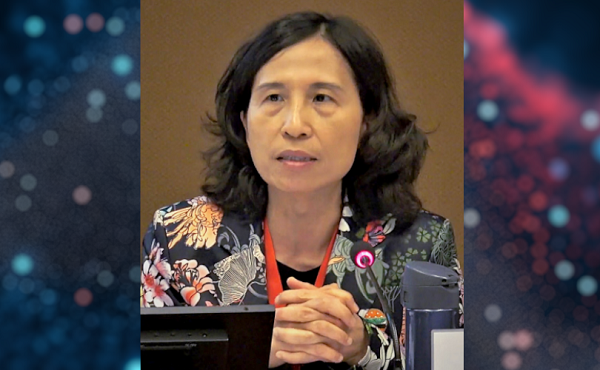
From LifeSiteNews
Dr. Theresa Tam received the Order of Canada for her controversial COVID-19 response as the nation’s chief public health officer.
Canada’s former top medical advisor, known for her promotion of masking and COVID vaccines, has received one of Canada’s highest honors.
On June 30, Governor General Mary Simon awarded Dr. Theresa Tam, Canada’s former Chief Public Health Officer (CPHO), the Order of Canada award for her work implementing dangerous COVID regulations, including masking and experimental COVID shots.
“For decades, Theresa Tam has striven to advance global and national public health as a pediatric infectious disease specialist and public servant,” the press release read.
“Her tenure as Canada’s chief public health officer has been characterized by her commitment to health equity and highlighted by her leadership role in the country’s response to the COVID-19 pandemic,” it continued.
The award, given to Canadians who have made extraordinary contributions to the nation, is Canada’s second-highest civilian honor.
Tam’s reception of the award comes just weeks after she stepped down as CPHO, ending her eight-year tenure in the position.
In the early months of 2020, Tam became well-known by Canadians for leading the country’s response to the COVID “pandemic” and pushing arbitrary and dangerous regulations.
Initially, Tam assured Canadians that masking was unnecessary, ineffective, and could even pose health threats.
However, shortly after, Tam changed her policy, telling Canadians that they should even wear masks during sex, a practice which has not been proven to be effective in preventing the spread of COVID and can cause myriad health issues.
Additionally, Tam promoted experimental COVID vaccines for Canadians as young as six months old despite having no long-term studies on its effects and an extensive amount of research proving the dangers of the experimental COVID mRNA jabs that include heart damage and blood clots.
In 2022, after thousands of Canadians reported adverse effects from the vaccine, Tam announced that the federal government was reviewing all federal COVID vaccine mandates, claiming that Canada’s Public Health Agency has never outright endorsed mandatory vaccination.
Tam’s remarks come after more than 1,000 federal workers have been suspended without pay because they chose not to get the COVID jabs or disclose whether they had them per the Privacy Act.
The Order of Canada was also awarded to British Columbia Provincial Health Officer Bonnie Henry, who is known not only for her heavy-handed COVID response, but also for promoting drug use throughout the province.
In 2023, hundreds of British Columbia health care workers sued Henry for ongoing COVID shot mandates preventing them from working. Under Henry, vaccine passports were implemented which required residents to show digital proof of vaccination to enter gyms, restaurants, and other “non-essential” facilities.
Henry also pushed the experimental and dangerous vaccine on children as young as five, despite that fact that clinical trials would not be completed for another two years.
Additionally, in 2024, Henry recommended that British Columbia expand its “safe supply” program to legalize fentanyl and heroin, despite evidence that the program is not working and has worsened the provinces drug crises.
COVID-19
New Peer-Reviewed Study Affirms COVID Vaccines Reduce Fertility

Here’s what the numbers reveal, and what it could mean for humanity
What was once dismissed as a “conspiracy theory” now has hard data behind it.
A new peer-reviewed study out of the Czech Republic has uncovered a disturbing trend: in 2022, women vaccinated against COVID-19 had 33% FEWER successful conceptions per 1,000 women compared to those who were unvaccinated.
A “successful conception” means a pregnancy that led to a live birth nine months later.
The study wasn’t small. It analyzed data from 1.3 million women aged 18 to 39.
Here’s what the numbers reveal, and what it could mean for humanity.
First, let’s talk about the study.
It was published by Manniche and colleagues in the International Journal of Risk & Safety in Medicine, a legitimate, peer-reviewed journal respected for its focus on patient safety and pharmacovigilance.
The study was conducted from January 2021 to December 2023 and examined 1.3 million women aged 18–39. By the end of 2021, approximately 70% of them had received at least one COVID-19 vaccination, with 96% of the vaccinated cohort having received either the Pfizer or Moderna vaccine.
By 2022, a stark difference was clear.
The vaccinated cohort averaged around 4 successful conceptions per 1,000 women per month.
That’s a staggering 33% LESS than the 6 per 1,000 seen in the unvaccinated group.
This means that for every 2 vaccinated women who successfully conceived and delivered a baby, 3 unvaccinated women did the same.
In 2022, unvaccinated women were 1.5 times MORE likely to have a successful conception.
Again, that’s a conception that led to a live birth nine months later.
The authors did not jump to the conclusion that their study proved causation. They cited that other factors may have played a role, such as self-selection bias
However, the researchers noted that self-selection bias does not explain the timing and scale of the observed drop in fertility.
Moreover, birth rates in the Czech Republic dropped from 1.83 per 1,000 women in 2021 to 1.37 in 2024, adding further evidence that the COVID-19 vaccines may be contributing to the decline in fertility.
That downward trend, the researchers argue, supports the hypothesis that something beyond individual decision-making may be affecting conception rates.
As such, they argue that the study’s results warrant a closer and more thorough examination of the impact of mass vaccination.
If this study holds true, and vaccinated women are really much less likely to have successful conceptions, the implications for humanity are massive.
Millions of babies could be missing each year as a result of COVID vaccination, and recent data from Europe and beyond already point to a deeply disturbing trend.
NOTE: Europe experienced a sharper decline in births than usual from 2021 to 2023.
Live births fell from 4.09 million in 2021 to 3.67 million in 2023, marking a 10.3% decline in just two years.
The new Czech study adds to growing evidence that COVID vaccines may be contributing to a dramatic decline in fertility, just as many feared all along.
As Elon Musk warns, “If there are no humans, there’s no humanity.”
Whether the shots are the cause or not, the trend is real—and it’s accelerating.
It’s time to stop dismissing the signals and start investigating the cause.
Thanks for reading. I hope this report gave you real value. This is a critically important topic that deserves attention.
If you appreciate my work and want to help keep it going, consider becoming a paid subscriber.
99% of readers get this content for free. But just $5/month from the 1% keeps it flowing for everyone else.
If this work matters to you, this is the best way to support it.
Be the 1% who makes it possible.
Catch the rest of today’s biggest headlines at VigilantFox.com.
-

 Business2 days ago
Business2 days agoElon Musk slams Trump’s ‘Big Beautiful Bill,’ calls for new political party
-

 Business2 days ago
Business2 days agoRFK Jr. says Hep B vaccine is linked to 1,135% higher autism rate
-

 International1 day ago
International1 day agoCBS settles with Trump over doctored 60 Minutes Harris interview
-

 Business1 day ago
Business1 day agoWhy it’s time to repeal the oil tanker ban on B.C.’s north coast
-
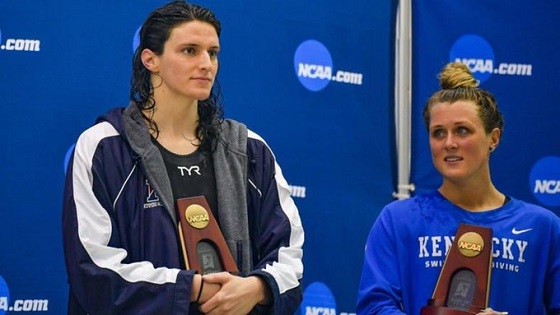
 MxM News1 day ago
MxM News1 day agoUPenn strips Lia Thomas of women’s swimming titles after Title IX investigation
-
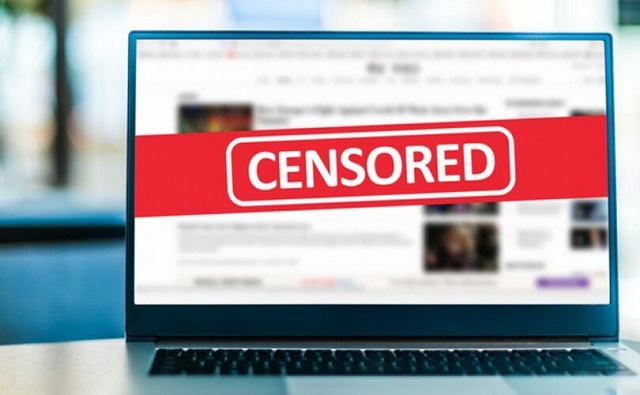
 Censorship Industrial Complex2 days ago
Censorship Industrial Complex2 days agoGlobal media alliance colluded with foreign nations to crush free speech in America: House report
-

 International2 days ago
International2 days agoRFK Jr. tells Tucker how Big Pharma uses ‘perverse incentives’ to get vaccines approved
-

 Energy1 day ago
Energy1 day agoIf Canada Wants to be the World’s Energy Partner, We Need to Act Like It














